October 2022
Lepidopteran pests such as stem borers cause major damage in maize fields, resulting in significant yield losses. It is imperative that farmers can identify these pests to manage them early with the right set of tools.
Moth flights begin in October and occur throughout South Africa, except in the coastal regions and Lowveld areas. Three moth flights occur per year, with the middle one the largest. Under favourable conditions, the lifecycle can be completed in seven to eight weeks.
Female moths lay egg batches in rows (ten to 80 eggs) between the stem and leaf sheath, which take seven to nine days to hatch. The egg batches are white when first laid but darken as they age. The first larval instars migrate into young leaf whorls to feed, producing characteristic small holes or ‘windowpanes’, or transparent leaf patches. Young larvae are dark brown in colour and become lighter as they mature, with characteristic small black spots along the body. Although older larvae can tunnel extensively into the stems, they prefer the tasselling stage. Larval feeding lasts for four to six weeks before pupating, after which adult moths soon emerge and repeat the cycle again.
DAMAGE
This is regarded as the most serious stem borer pest of maize. It poses additional risks to humans and animals, as crop damage due to larval feeding often increases susceptibility to secondary infections such as Fusarium rot.
Larval feeding on the growing points of plants results in die-off of central leaves in the whorl, which dry out and cause withered ‘dead hearts’ symptoms. Due to tunnelling by adult larvae, stems are often weakened as they are hollowed out and become filled with frass, causing them to break under windy conditions. Larvae can also bore into the maize cobs and feed on the seed, leaving visible frass deposits.
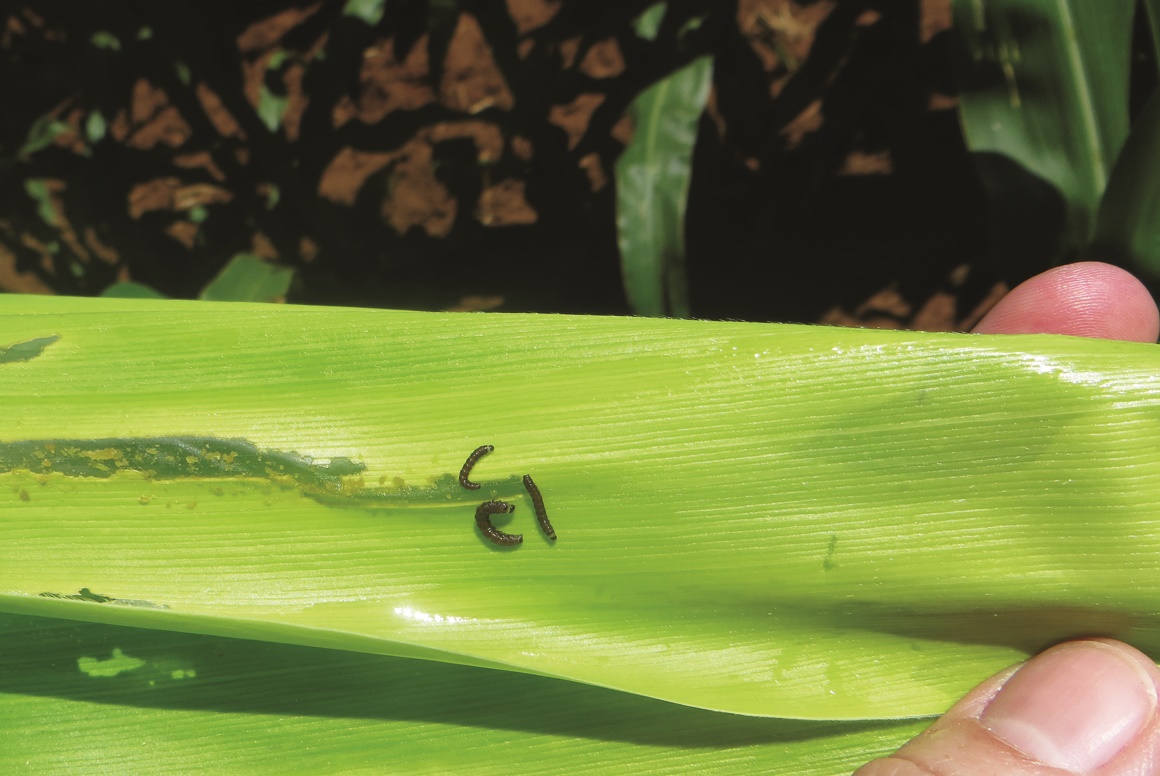
A young Busseola larvae causing windows in whorl.
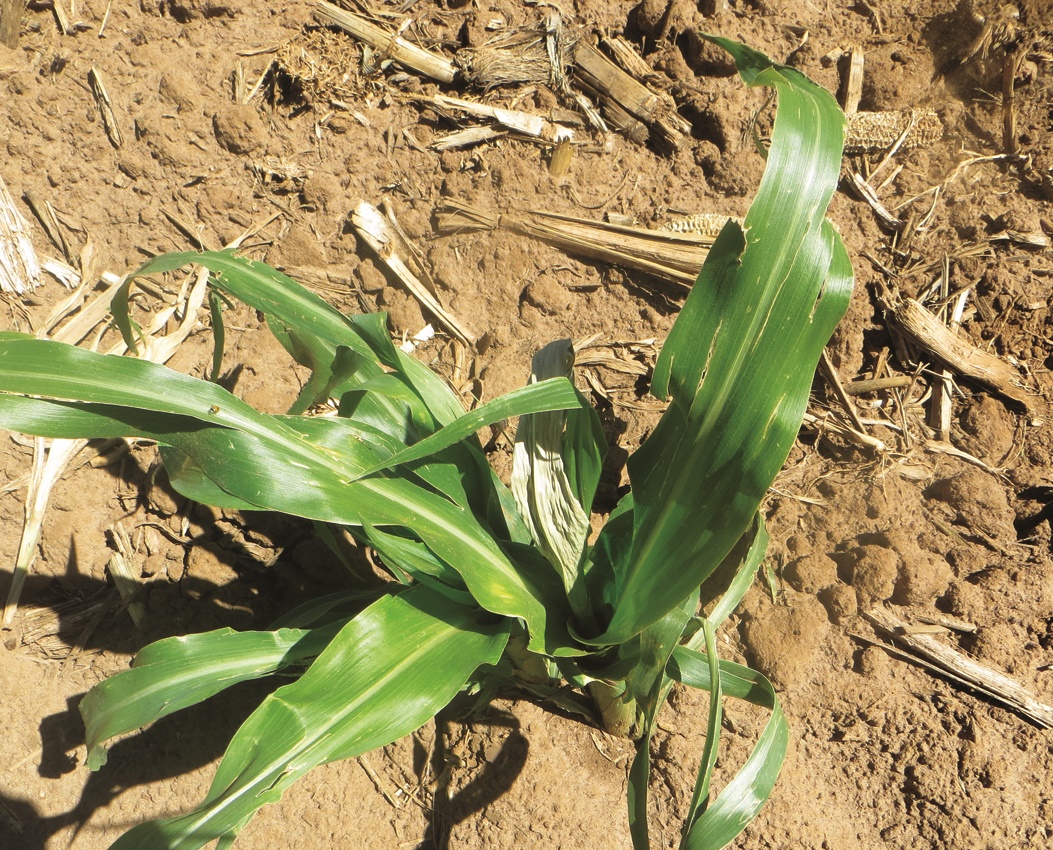
Dead heart.
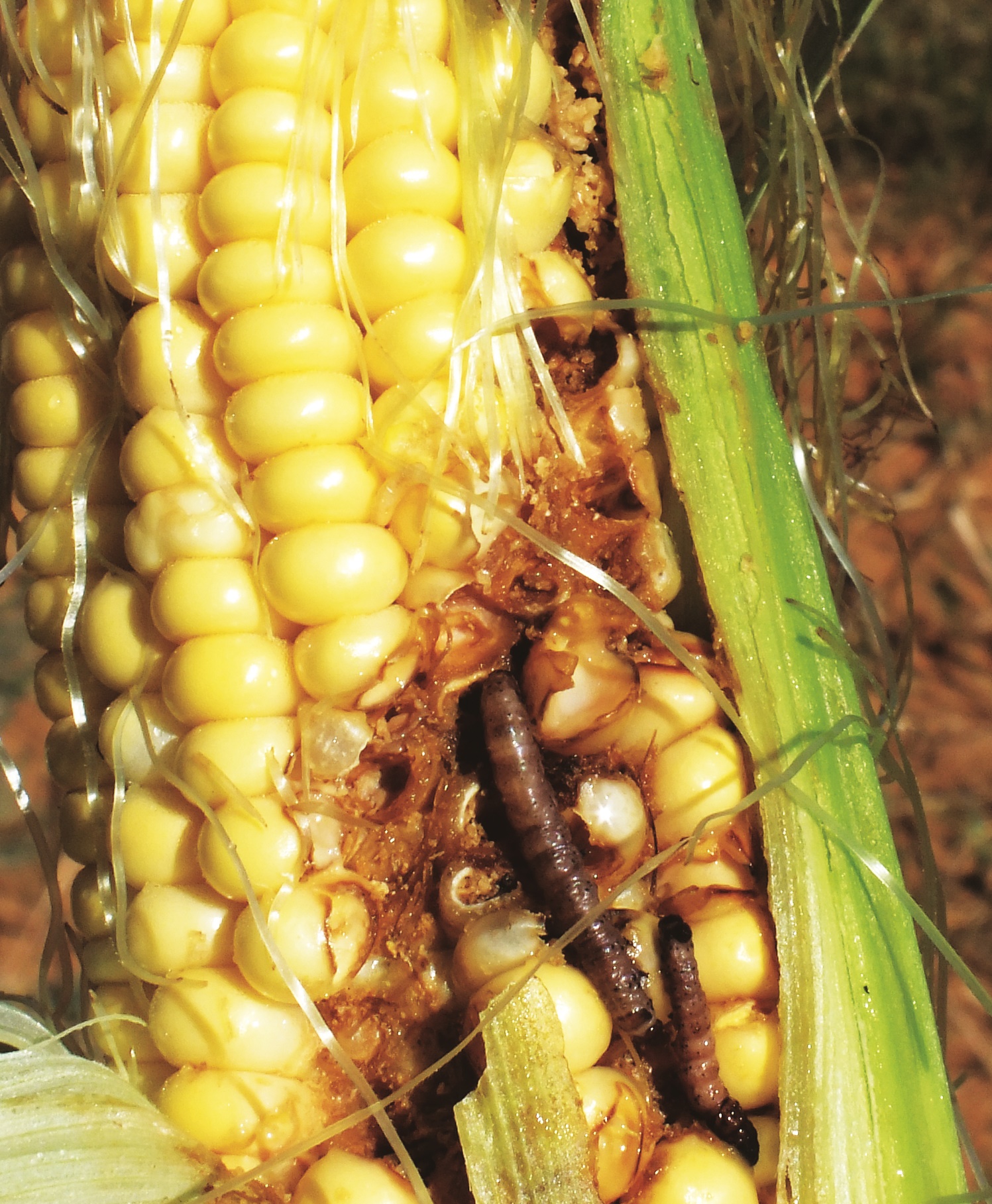
Larvae feeding on tassels and in maize cobs.
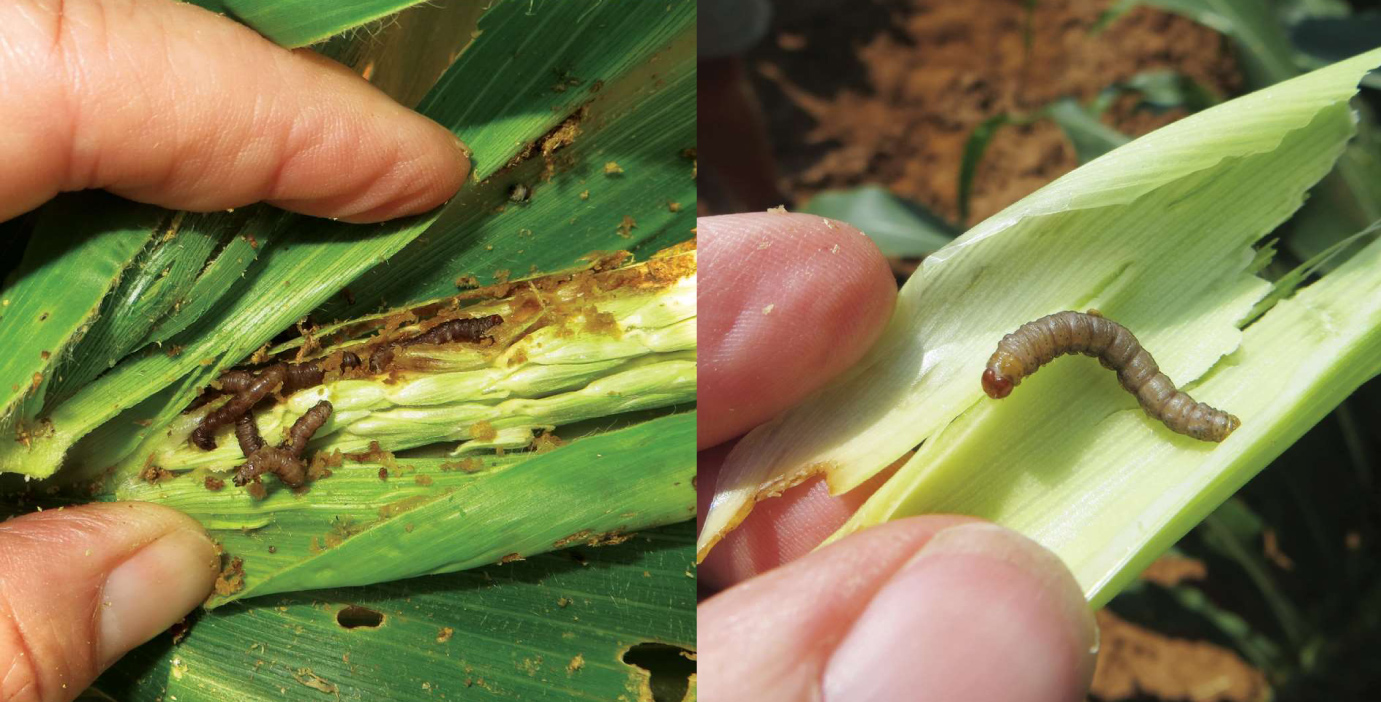
Colour variation of Busseola larvae, from light to dark.
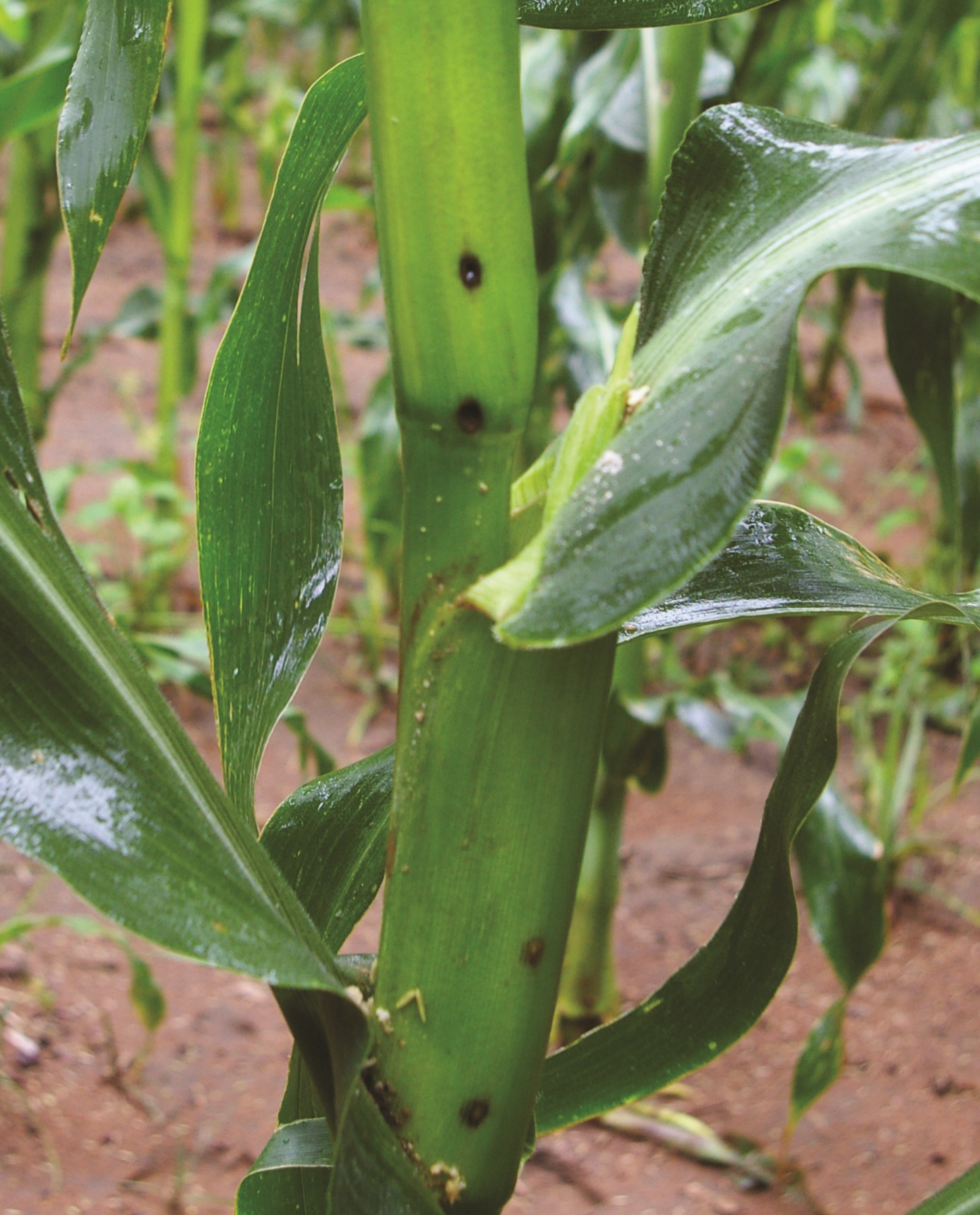
Emergence holes in a maize stalk.
Publication: October 2022
Section: Pula/Imvula
Author: CropLife South Africa